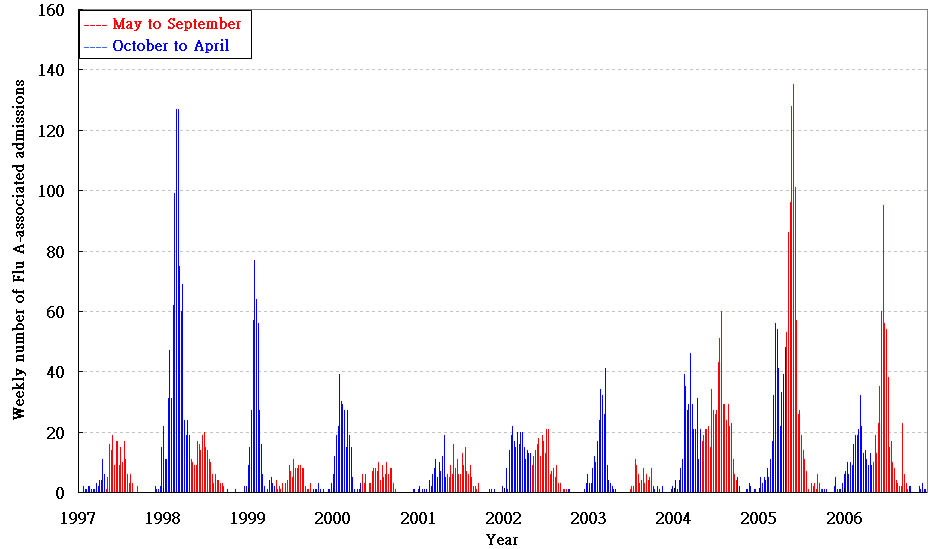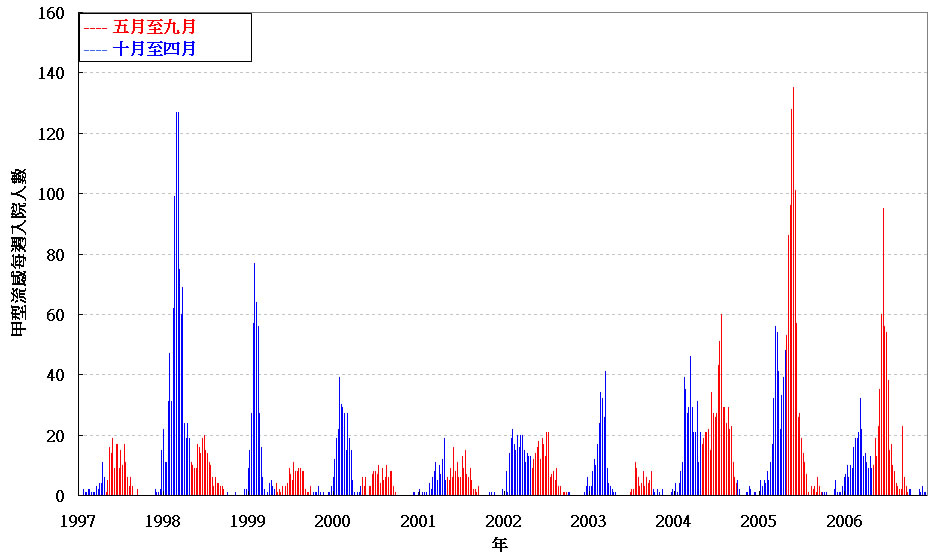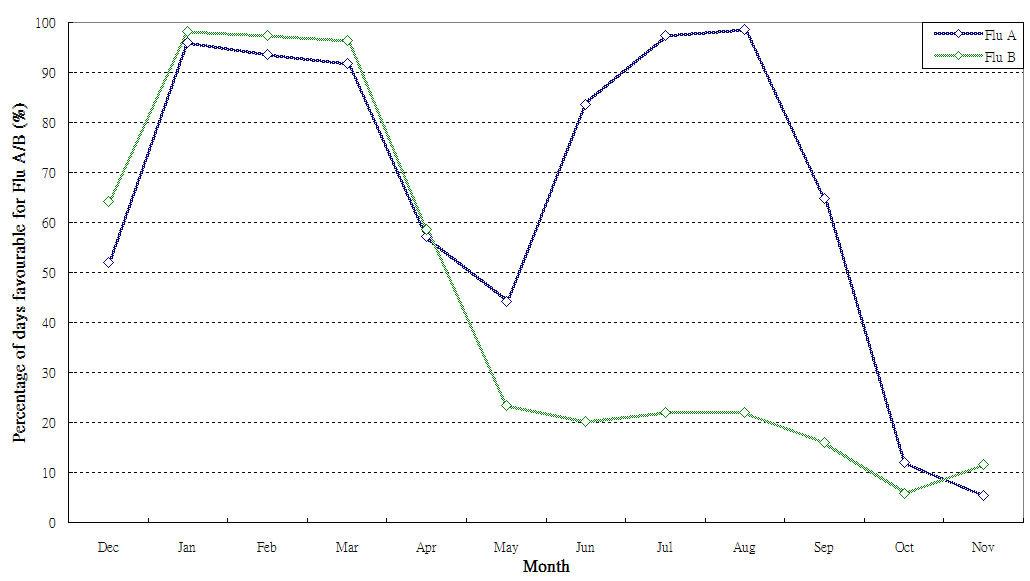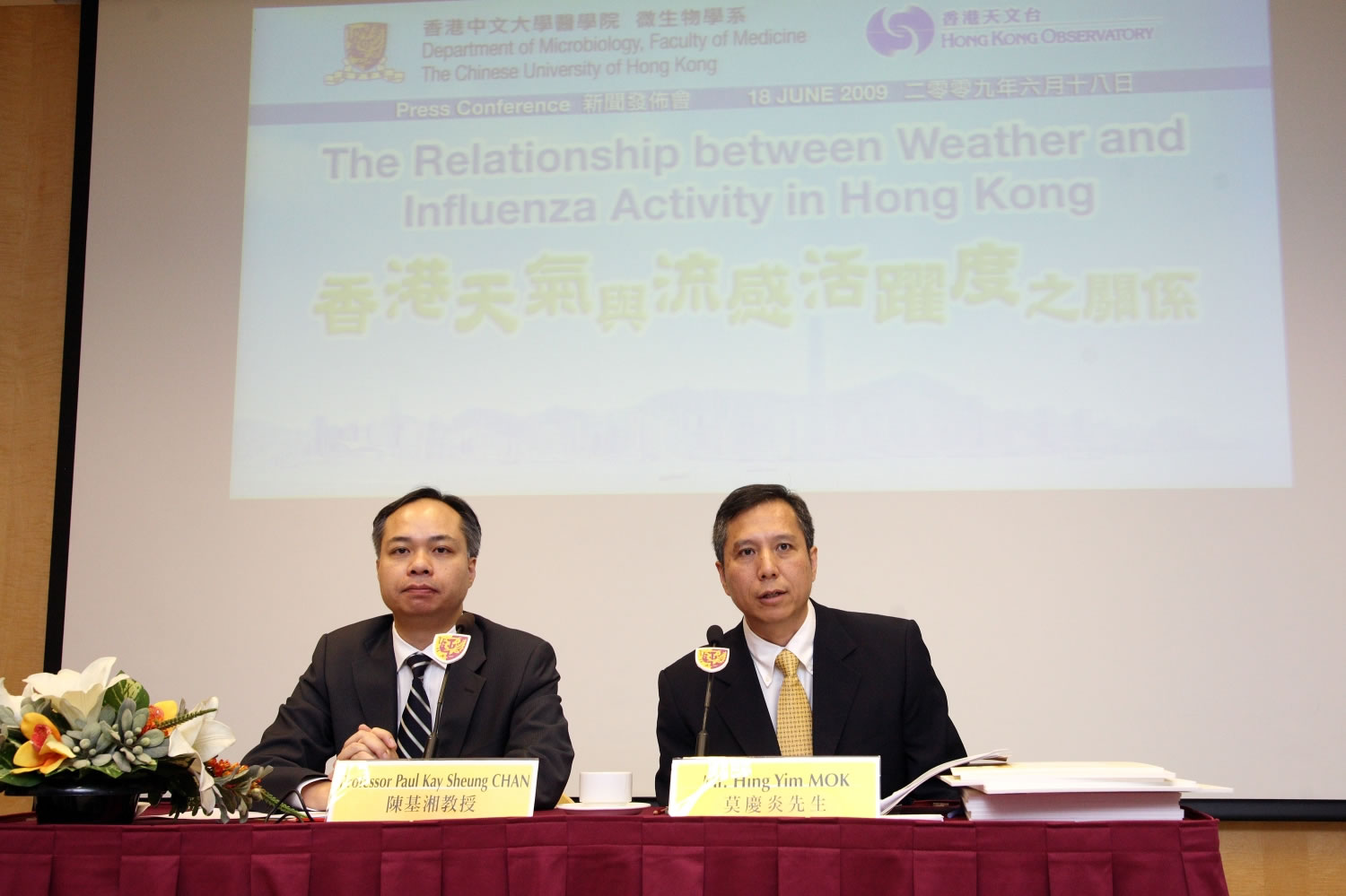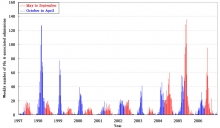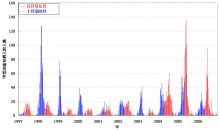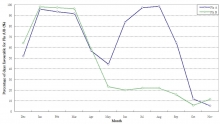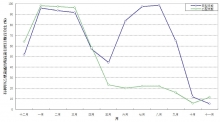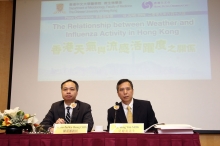CUHK
News Centre
CUHK and the Hong Kong Observatory Release Results of Study on Relationship between Weather and Influenza Activity in Hong Kong
The Chinese University of Hong Kong (CUHK) and the Hong Kong Observatory announced today (18 June) the results of the recent joint study on the relationship between weather and influenza activity in Hong Kong. The study analysed the information of the laboratory-confirmed influenza A and B cases admitted to the Prince of Wales Hospital and the Observatory’s weather data recorded at Shatin from 1997 to 2006.
The study found that, in general, there were more influenza A- than influenza B-associated admissions in Hong Kong. The two types of influenza showed a different relationship with weather conditions. Influenza A had two seasonal peaks in Hong Kong which occurred respectively in winter/spring months (February to March) and summer months (June to July). This observation is in contrast with the situation in temperate regions where only a single winter peak is observed annually. Influenza B also had a clear winter/spring peak, but its activity during the summer months was more variable.
It was also found that cold and humid conditions were associated with a higher level of activity of both influenza A and B in winter/spring months. In contrast, hot and humid conditions in summer months were associated with a higher level of activity of influenza A, but the association was not obvious for influenza B.
Furthermore, for influenza A, a shift in the relative magnitude of the two seasonal peaks was observed. In the early part of the study period (1998-2000), the magnitude of the winter/spring peak of Influenza A was higher than the summer peak. Towards the latter part of the study period (2004-2006), the magnitude of the summer peak had become larger than the winter/spring peak.
In view of the above results, Professor Paul Chan Kay-sheung of the Department of Microbiology of CUHK remarked that the emergence of a second seasonal peak of influenza A activity in summer in Hong Kong, particularly its recent trend of increase in magnitude, calls for special attention on the timing of vaccination as well as its duration of protection. November to December is the best period for vaccination since its effectiveness will be decreased if it is administered too early or too late.
Mr Mok Hing-yim, Senior Scientific Officer of the Hong Kong Observatory expected that the weather conditions in Hong Kong in this summer would be near normal. The public is advised to pay attention to personal and public hygiene in the coming months.
Number of weekly influenza A – associated admissions recorded at the Prince of Wales Hospital from 1997 to 2006
Average monthly percentage of days favourable for peak activity of influenza A and B in 1997 to 2006


